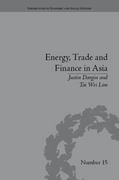Question
Solve An investment company has a constant population. Everyone's demand for chequing deposits is 5,000 goods in total in every period. The economy has a
Solve
An investment company has a constant population. Everyone's demand for chequing deposits is
5,000 goods in total in every period. The economy has a total endowment of 10,000
goods per period. There is a total stock of unintermediated capital of 1,000 goods in
each period. Bank deposits are the only form of money in the economy. Deposits of
banks are subject to a 20 percent reserve requirement. The net real rate of return on
capital is 10 percent per period. After meeting the reserve requirement, banks invest the
remainder of all deposits into capital. Individuals do not hold capital. The fiat money
stock is $2,000 per period. Capital takes two periods to generate final returns.
21. What is this economy's price level?
(A) 0.2.
(B) 0.3.
(C) 0.4.
(D) 0.5.
22. What is the total nominal money stock, M1t?
(A) $20,000.
(B) $10,000.
(C) $2,500.
(D) $1,500.
23. What is the money multiplier?
(A) 20.
(B) 10.
(C) 5.
(D) 2.
24. What is the total (nal) capital output after two periods?
(A) 6,050.
(B) 4,840.
(C) 1,210.
(D) 1,000.
25. What is this economy's real GDP?
(A) 16,050.
(B) 14,840.
(C) 11,560.
(D) 10,000.
The next four questions involve the following situation.
An economy has 200 young people born each period. Each young person receives an
endowment of 200 goods, but nothing when middle-aged or old. There is a storage
technology and a bank. For each good put into storage in the current period, the person
receives a single unit of consumption next period (a real return of zero). In addition,
capital is available, which pays X = 1:25 two periods after it is acquired. If a person
liquidates capital after one period, then only 0.8 units of the consumption good can be
obtained. Assume that 10 percent of people want to consume only when middle-aged,
and the remainder only want to consume when old; however, people only realize their
preferences with regards to consumption when they reach middle-age.
26. How many goods does the bank hold in storage?
(A) 0.
(B) 4,000.
(C) 36,000.
(D) 40,000.
27. How many goods does the bank hold in capital?
(A) 0.
(B) 4,000.
(C) 36,000.
(D) 40,000.
28. If there is no bank run, how many goods will middle-aged people consume?
(A) 0.
(B) 4,000.
(C) 36,000.
(D) 40,000.
29. If there is no bank run, how many goods will old people consume?
(A) 0.
(B) 4,000.
(C) 36,000.
(D) 40,000.




Step by Step Solution
There are 3 Steps involved in it
Step: 1

Get Instant Access to Expert-Tailored Solutions
See step-by-step solutions with expert insights and AI powered tools for academic success
Step: 2

Step: 3

Ace Your Homework with AI
Get the answers you need in no time with our AI-driven, step-by-step assistance
Get Started


